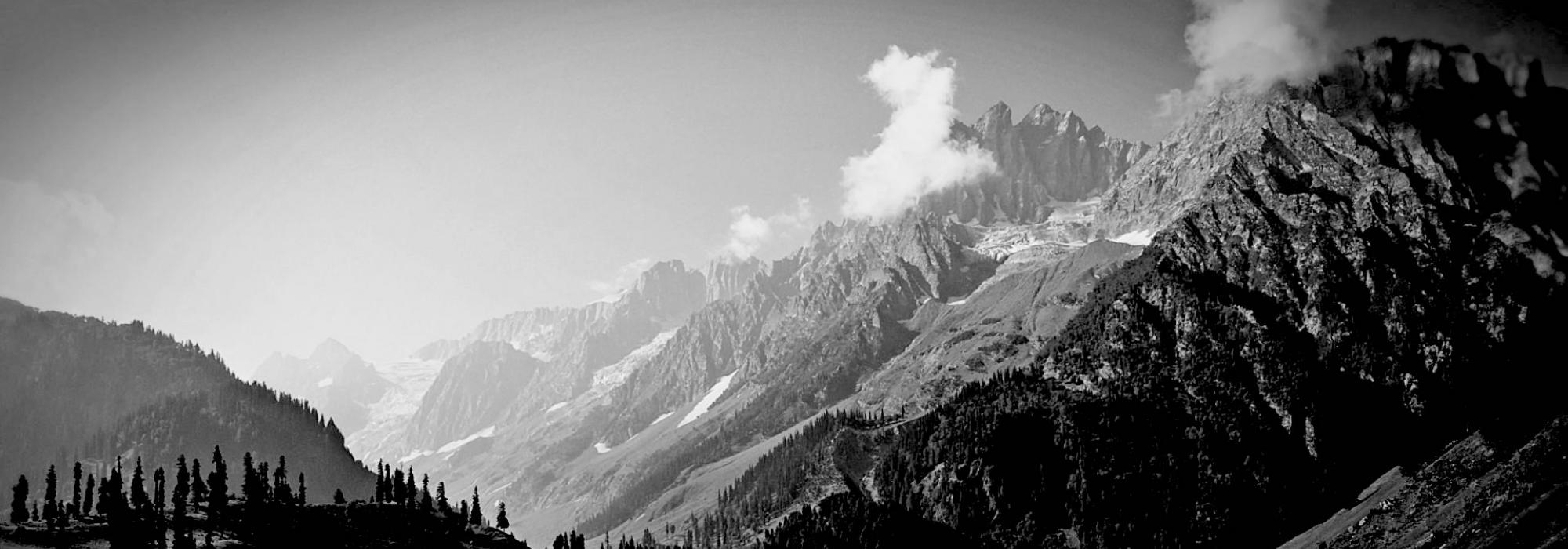Once, when the precious gem was being brought upon a golden plate, an eagle mistook it for a piece of flesh and flew away with it. The king chased behind the bird and even before he could shoot an arrow at it, it went beyond the bow’s rage. Even as everyone had lost hopes of retrieving the gem, a huntress comes there the gem and also the arrow which had killed the bird. The king is surprised upon seeing the inscription on the arrow – Āyu, the son of Urvaśī and Purūrava. A tāpasī appears there with Āyu and says that Urvaśī had left the child with her; the apsarā, had apparently, put the child in the care of tāpasī right at its birth and had instructed her to ensure that the child is not spotted by his father. The tāpasī adds that she had come to drop Āyu there because his behaviour currently was against the nature of the ṛṣyāśrama; she wanted to hand the boy back to the mother, Urvaśī. The king is happy upon the reunion with his son, but the apsarā is sad that she has to leave behind her beloved husband; she would have to return to the devaloka as per the directions of Indra. Incidentally, there was a sudden outbreak of a battle between the devas and the asuras and Indra had sought Purūrava’s help. He wanted to keep his ally Purūrava in good humour and had sent Nārada with the instructions that Urvaśī could remain with her husband forever. This is a pleasant conclusion to the play. Nārada anoints Āyu as the crown-prince.
The story of Urvaśī and Purūrava is quite ancient. It is narrated in the Vedas, purāṇas, and in many other story telling traditions of the country; while in some cases, there is a passing mention of the story, in others, it is narrated in much detail. The Ṛg-veda (maṇḍala 10, sūkta 95) contains the first mention of the story; it tells us about Purūrava who is pining for the company of his beloved. The story is elaborated in the Padma-purāṇa as well as the Bhāgavata-purāṇa. The following is a summary of the versions in the purāṇas –
Urvaśī comes down to the earth as a result of the curse hurled by Mitrā-varuṇa; she falls in love with Purūrava in the Pratiṣṭhāna-nagara. Purūrava accepts her advances and Urvaśī agrees to spend her life with him under the following conditions –
- Purūrava was to protect and take care of two sheep that she had brought up like her own children
- He must feed Urvaśī only with ghee; that would be her staple food
- He must not appear naked before her
Purūrava agrees to all her conditions. They spend happy days together in each other’s company.
Once, the devatas develop boredom due to the continued absence of Urvaśī and wish to have her back in the devaloka; they send a few gandharvas to escort her back. The gandharvas try to steal away her favourite sheep that were tied to the legs of her bed; the sheep start screeching for help and Purūrava, who was asleep, wakes up with a start and rushes to protect them, even as he is naked. The gandharvas create lightning just in time and Urvaśī sees Purūrava naked. She is upset that her condition is now broken and vanishes from the place.
Purūrava is heart-broken and roams around like a madman. Once, when is wandering in search for her beloved, he happens to spot her near the Mānasa-sarovara. Urvaśī was pregnant then and asks him to come back after a year. Accordingly, Purūrava returns to the place after a year but gets to spend only a day in her company. He continues to visit her one day a year and eventually gives birth to Āyu and six other children. His desire, however, was to stay in her company forever. He prays to the gandharvas to fulfil his wish and they gift him the agnisthāli. One day, he forgets it and comes home empty handed. He suddenly recalls the precious object and rushes back to the spot where he had left it only to find a śamī [1] tree at the place; he also finds a peepal tree growing out of the śamī tree. He picks up twigs of the two trees, rubs them against each other, and kindles fire – Agni. He performs yajña using the Agni and finally attains a permanent place in the gandharva-loka.
To be continued ...
The current series of articles is an enlarged adaption of Prof. A. R. Krishnasastri's Kannada treatise Saṃskṛta-nāṭaka. They are presented along with additional information and footnotes by Arjun Bharadwaj.
[1] Prosopis Spicigera or (accord. to others) Mimosa Suma (possessing a very tough hard wood supposed to contain fire) – From the Monier-Williams Dictionary











































